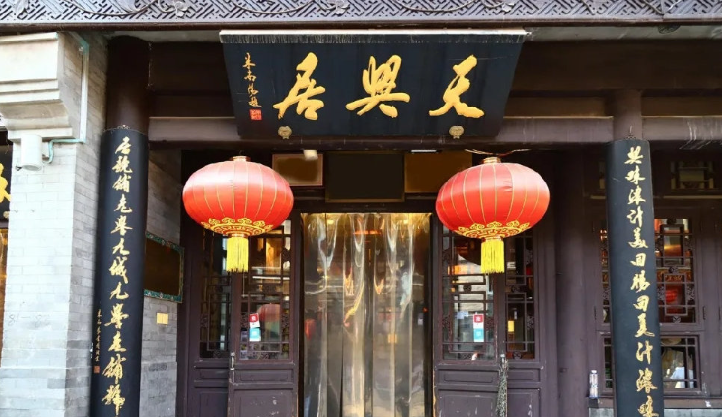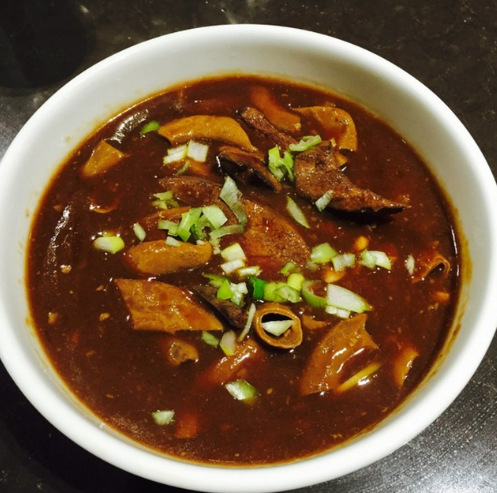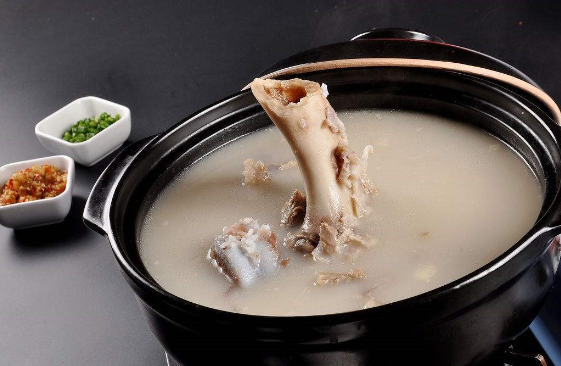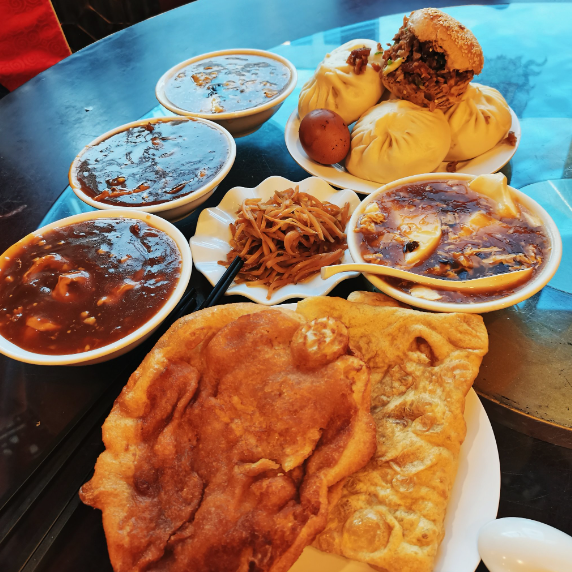If Beijing’s street food had a breakfast MVP, Zhagang (炒肝, “stir-fried liver”) would claim the crown. This hearty, garlicky stew of pork liver and intestines, thickened to velvety perfection, has been fueling locals for over 150 years.
Unlike its name suggests, Zhagang isn’t fried—it’s a masterful blend of textures and umami, best slurped from a bowl alongside steaming baozi (buns).
Dive into the story of this humble yet iconic dish that’s equal parts comfort and culinary craftsmanship.
A Breakfast Born in the Qing Dynasty
Zhagang’s origins date back to 1862, when a humble shop named Huixianju in Beijing’s Qianmen district began serving it as a filling, affordable breakfast for rickshaw pullers and merchants. By the 1930s, rival eatery Tianxingju perfected the recipe, turning it into a citywide sensation.
Today, Zhagang remains a staple of Beijing’s breakfast culture, enjoyed in alleyway canteens and Michelin-recommended spots alike.
What Makes Zhagang Unique?
Zhagang’s charm lies in its simplicity and bold contrasts:
The Ingredients:
-
- Pork Liver: Sliced thin for tenderness, never chalky.
- Intestines: Cleaned meticulously, stewed until soft but chewy.
- The Broth: A rich base of bone stock, soy sauce, and garlic, thickened with cornstarch for a glossy, gravy-like texture.
The Technique:
-
- No Stir-Frying: Despite its name, Zhagang is gently simmered to meld flavors.
- Garlic Dominance: Minced raw garlic is added last, giving a pungent kick that cuts through the richness.
How to Eat Zhagang Like a Pro
The Tools:
-
- Skip the spoon! Locals lift the bowl to their lips, sipping the stew directly.
- Pair with baked baozi (猪肉大葱包, pork and scallion buns) for dipping.
The First Bite:
-
- Taste the broth first—savory with a garlicky punch.
- Chew the intestines slowly to appreciate their springy texture.
Pro Tip:
Add a dash of black vinegar for brightness or chili oil for heat.
Where to Find Authentic Zhagang in Beijing
- Tianxingju (天兴居):
The 150-year-old titan near Qianmen. Their Zhagang is silkier than most, with a garlic-forward broth. Opens at 6:30 AM—arrive early! - Yao Ji Zhagang (姚记炒肝):
A Drum Tower favorite since 1958. Known for generous intestine portions and crispy baozi. - Huguo Temple Street Eats:
Join locals at unmarked stalls for a $1.50 bowl—cash only, no frills, maximum flavor.
Zhagang vs. Global Offal Dishes
- Vs. British Liver & Onions: Zhagang is smoother, broth-based vs. pan-fried.
- Vs. Filipino Dinuguan: Both use offal, but Dinuguan is a chocolate-colored blood stew.
- Vs. Polish Czernina: Zhagang skips sweetness for garlic and soy depth.
Why Zhagang Embodies Beijing’s Spirit
- Morning Ritual: It’s a dish tied to routine—early risers bond over shared bowls.
- Zero Waste: Uses affordable cuts, reflecting old Beijing’s resourcefulness.
- Ugly-Delicious Appeal: Looks murky, tastes divine—a metaphor for the city’s hidden gems.




















No comments yet